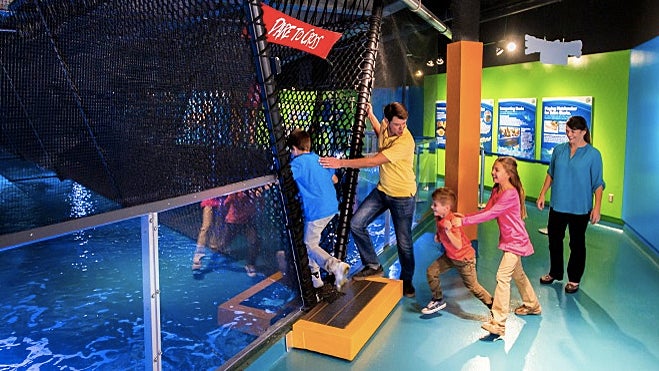

Unlike sharks, their teeth are not replaceable and they only have three pairs of large grinding teeth that must last their entire lives. However, they also have three tentacle-like structures, two that can be extended from the pelvis and the other from their heads, to help clasp the female. Like other sharks, St Joseph sharks have external claspers that are used for reproduction. Their upper jaw is fused with their skull, whereas the upper jaw moves freely in true sharks. In addition to having only one set of gills, these are covered by operculum’s structures only seen in bony fish. You can think of a St Joseph shark as being halfway between a typical fish and a typical shark.Įlasmobranchs have multiple gill openings, but Holocephali like St Joseph sharks only have one on each side – a trait they share with bony fish. Unlike these mythical creatures, the St Joseph shark is as close to a real-life chimaera as we can get – a combination of traits commonly associated with sharks and those associated with bony, ray-finned fish.

In Greek mythology, a chimaera was a beast composed of the parts of different animals, many of which you may have heard of – minotaur’s gryphons and Cerberus. They are a member of the subclass Holocephali, commonly known as chimaeras – the only member of this group commonly found in South African waters. They also have a venomous spine protruding from their dorsal fin that is used for self-defence.Ī “real life” chimaera, the reason they are so weird is that they branched off from other members of the Chondrichthyes (cartilaginous fishes) family about 400 million years ago.Įlasmobranchii (the subclass that contains sharks and rays) evolved the distinct characteristics we associate with cartilaginous fishes, but the Holocephali class took a different evolutionary path.

Their unusually long snout is an advanced sensory organ that St Joseph sharks use to detect prey. Their bodies are soft, their heads are large and they only have a single gill opening on each side. Small, silver and scale less with a trunk-like snout – there is no denying that St Joseph sharks are unusual-looking fish. The striking colour of bronzy or olive grey above, white below with no conspicuous marks on any of the fins with a moderately prominent white band on each flank. The inter-dorsal ridge is usually absent with the pectoral fins long, falcate and narrow-tipped.

Shark bridge teaching free#
The second dorsal fin has short free tip and originates over or slightly behind the anal fin. The first dorsal fin originates over or behind free rear tip of pectorals. The first dorsal fin with bluntly pointed apex and short free rear tip is much larger than second dorsal or anal fins. The snout is moderately long and narrowly rounded, with small anterior nasal flaps Physical description and identifying characters Populations of bronze whalers in both hemispheres have seasonal migrations that are in response to the changes in water temperature and other factors like food availability, reproductive events, sex and age.īonze whalers are born at a size of 60cm / 23.6 inches females reach maturity from 2,4m / 7.8feet and will reach a maximum size over 3m / 9.8feet. They range from close inshore in the surf zone to far offshore, from the sea surface to 400m in depth. Habitat: Bronze whalers are coastal-pelagic species, preferring inshore and offshore temperate waters.


 0 kommentar(er)
0 kommentar(er)
